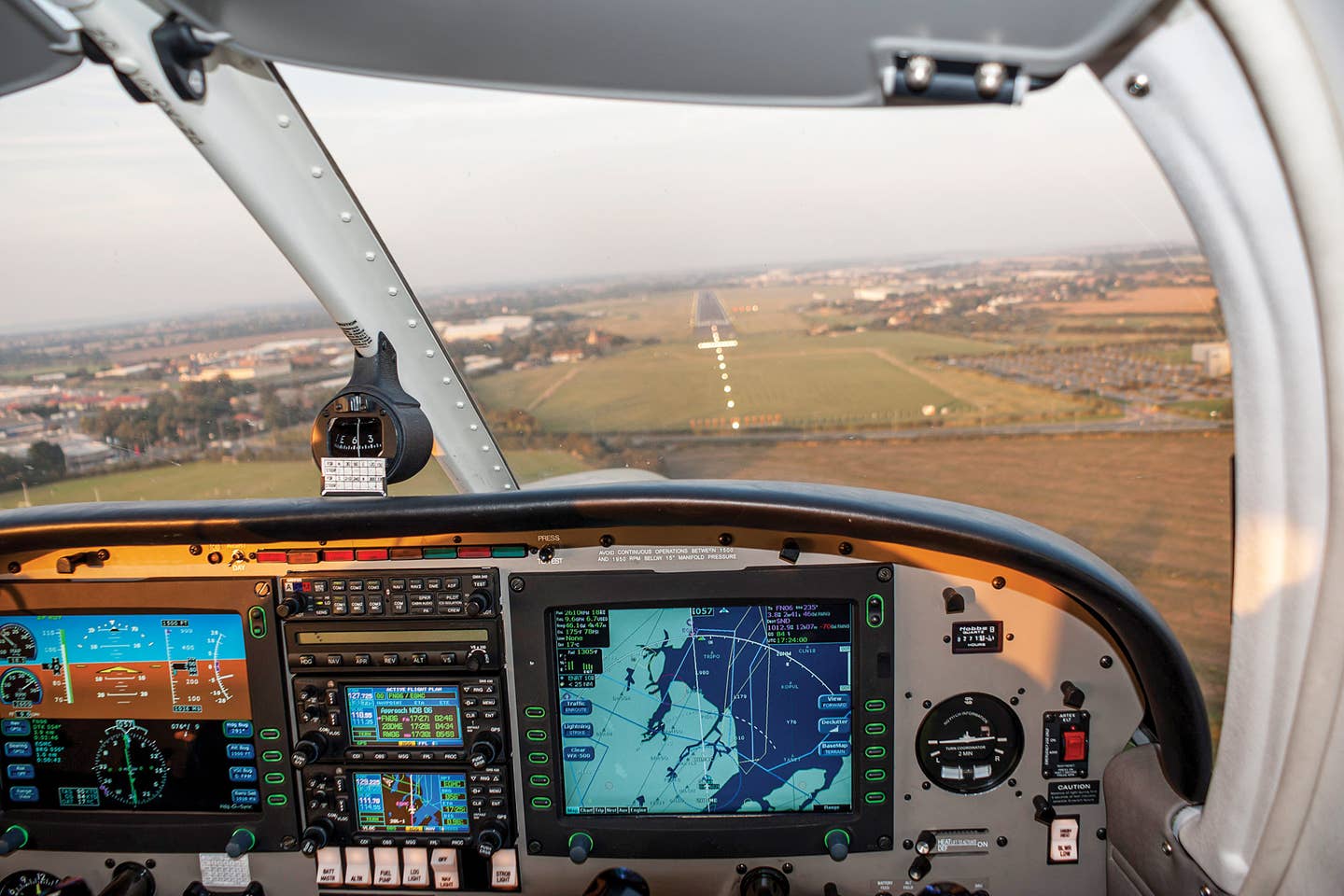
Know the approach lighting system for your runway so you know what to look for. swp23/shutterstock
Single-pilot IFR is the hardest thing most people will ever do. If you’re a heart surgeon, you might disagree, but for almost everyone else, there’s nothing that compares. The combination of high stakes and an unrelenting workload makes for a unique challenge, and there’s no undo button.
Instrument training should embrace that challenge, with a focus on both attitude-instrument-flying technique and a true pilot-in-command mindset. That means more than just physical skills—a good instrument pilot has good habits, ones that automatically build in safety margins. And approaches are where habits matter most. In 2020, these have less to do with identifying VORs and more to do with managing technology, but the fundamentals remain the same.
Brief Every Approach
It doesn’t matter if an airline crew has flown the same approach 100 times; both pilots will review the essential information and make sure they’re both expecting the same thing. For a single pilot in a Cessna or Cirrus, such a briefing might add a few topics, such as any personal minimums you have or any equipment limitations. I’ve added three things to my typical briefing, based on lessons learned. First, I confirm the type of minimums that are applicable. On an RNAV approach, it’s easy to mistake a decision altitude on an LPV approach (no level off) for a minimum descent altitude on an LNAV approach (level off and look for the runway). Then, I look to see if there’s a visual descent point on the approach plate—it’s helpful for making a stabilized approach to the runway from minimums. Last, I note the type of approach lighting to look for. The difference between a full ALSF-2 and two lonely REILs is dramatic.
Go/No-Go at the Final Approach Fix
Once the approach is briefed (ideally in cruise), you’re not done verifying things. I use the final approach fix as my last go or no-go decision point. This is the beginning of a critical time period, when you’re knowingly descending from a safe altitude toward the ground, so I like to pull back for a few seconds and pretend I’m the copilot. Is the airplane stabilized and on speed? Are the avionics set up correctly? Is that CDI button on the GPS on the appropriate VLOC/GPS setting, and is the autopilot doing what you expected it to do? Unless the answer to all is yes, it’s time to abort the approach and get things straightened out. In the clouds—500 feet above the ground—is no time to be uncertain.
Talk To Yourself
Even when I’m alone, I make verbal callouts throughout the approach. From “localizer alive” to “gear down,” there’s no penalty for talking to yourself. I also like to call out 500, 200 and 100 feet above minimums as a reminder to prepare for missed approach or landing. But make sure the push-to-talk button isn’t pushed when you’re running your checks.
Know Your Airplane’s Profiles
We’ve all heard the saying, “Don’t chase the needles.” It’s great advice, but I wish more f light instructors explained how to avoid that mistake: Set up the airplane for success, with power, gear, f laps, speed and sink rate established at the final approach fix. I know that, on a typical approach in a Cessna Skyhawk, 1,700 rpm, 10 degrees of flaps and a 500 foot per minute descent rate will get me in the ballpark. If I start from a known profile, any changes will be much smaller, and the approach a lot smoother. Practice these numbers on a VFR day and write them down.
Read More from John Zimmerman: Pilot’s Discretion
Have a Theory About the Approach
I start every approach with a " heading hypothesis," an educated guess of the right heading that will keep the needle centered, based on the current wind. If I know there’s a 15-knot crosswind from the left, I might start with a 5-degree left heading correction. If the needle is still drifting left, I’ll add another 5 degrees. This sounds basic, but the key is to change your mindset about who’s in control. You are flying a heading to stay on course, so the needle follows your airplane, not vice versa.
Follow a Technology Plan
Flight directors, autopilots, GPSs and data-link weather absolutely make IFR flying safer—but only if you have a plan to use them wisely. Know how to use them well, and add an avionics plan to every approach briefing. If I’m going to use the flight director or autopilot, that’s fine, but it should be planned ahead of time. I also like to rotate approaches, so one might be on the autopilot, the next with the flight director and the third with raw data only. Remember that heading and altitude bugs, trend lines, and synthetic vision can add helpful cues.
Practice Missed Approaches
Missed approaches get talked about more than they get practiced. On your next practice approach, don’t declare victory at the DH or MDA. Fly a realistic missed approach with a view-limiting device, and focus on building muscle memory; the reaction must be an immediate climb and positive attitude control. Try performing a go-around before the missed approach point (don’t turn early) and after a simulated autopilot failure (don’t try to save the approach). Hopefully the previous six habits keep you from needing this last one, but a safe pilot is always prepared.
This story appeared in the September 2020 issue of Flying Magazine

Subscribe to Our Newsletter
Get the latest FLYING stories delivered directly to your inbox






